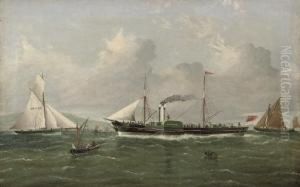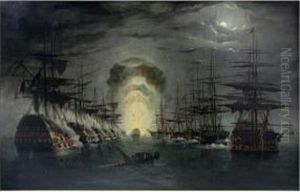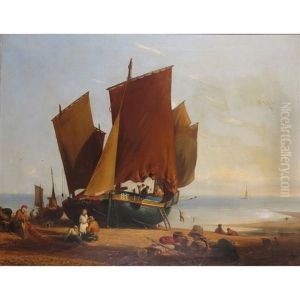John Tudgay Paintings
John Tudgay was a British maritime painter who is best known for his detailed and atmospheric depictions of ships and seascapes. Born in 1815, his exact birthplace is not well-documented, but it is believed that he was active primarily in the London area. Tudgay's work falls within the tradition of 19th-century British marine art, a genre that was highly popular and celebrated in a nation with strong naval and maritime heritage.
Tudgay's career spanned the mid to late 19th century, a period that saw significant changes in maritime technology, including the transition from sail to steam-powered vessels. While the precise details of his training are unknown, it is clear that Tudgay had a deep understanding of ship design and maritime conditions, which he expressed through his meticulous brushwork and attention to detail.
Throughout his lifetime, Tudgay's paintings would have appealed to a range of clientele, from naval officers and shipowners to merchants and collectors who were eager to commission works that reflected their interests or commemorated specific vessels. His works often featured both merchant ships and naval vessels, capturing them in various conditions of wind and weather, highlighting his versatility and expertise in the genre.
Despite his skill and the quality of his work, John Tudgay did not achieve the same level of fame as some of his contemporaries, such as J.M.W. Turner or William Clarkson Stanfield. Nonetheless, Tudgay's paintings are appreciated for their historical value and technical proficiency, and they continue to be of interest to collectors and historians of maritime art.
John Tudgay's dedication to his craft is evident in the body of work he left behind. He passed away in 1886, having contributed significantly to the British tradition of marine painting. His legacy persists through his paintings, which serve as valuable records of the maritime history of the 19th century and exemplify the aesthetic qualities of the period's marine art.



